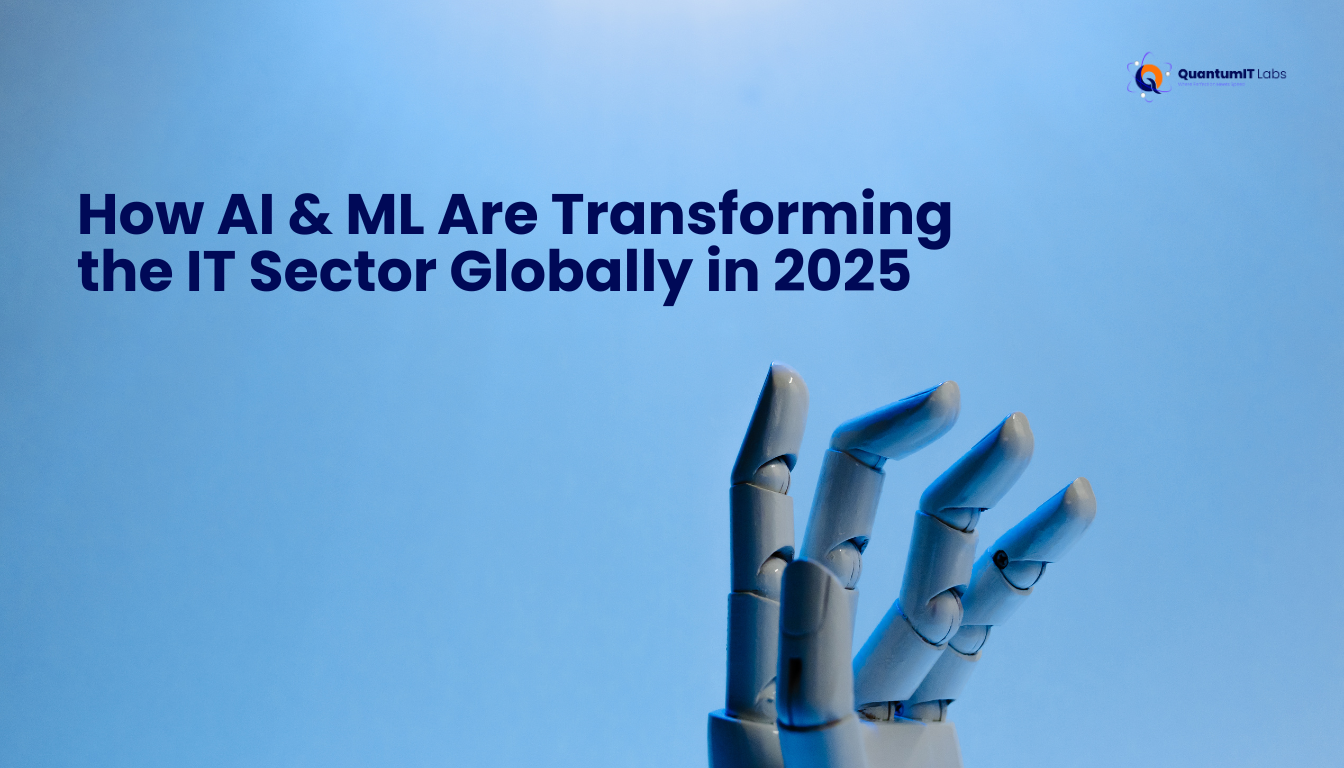As we progress through 2025, Artificial Intelligence (AI) and Machine Learning (ML) continue to make significant strides in transforming the IT sector. From enhancing operational efficiency to enabling new business models, AI and ML technologies are revolutionizing how IT companies operate, innovate, and deliver services. Here are some of the key ways AI and ML are reshaping the IT industry:
1. Automating IT Operations (AIOps)
AI and ML are revolutionizing IT operations by automating complex processes that were traditionally handled manually. AIOps (Artificial Intelligence for IT Operations) leverages AI to monitor and analyze data from IT infrastructure, automatically identifying and resolving issues, optimizing performance, and preventing system downtimes. This ensures quicker response times, cost savings, and enhanced operational efficiency.
In 2025, AIOps will become increasingly autonomous, helping IT teams manage ever-growing complexities in systems and networks.
2. Improved Cybersecurity
With cyber threats becoming more sophisticated, AI and ML are being leveraged to create advanced security solutions. AI-powered cybersecurity tools can predict, detect, and respond to potential cyberattacks in real-time by analyzing patterns and behaviors across networks.
ML models will continue to evolve, identifying new vulnerabilities and threats faster than traditional methods. As cybercrime becomes more intelligent, AI and ML will be indispensable for keeping IT infrastructures secure.
3. AI-Powered Cloud Computing
The IT sector’s shift to cloud-based solutions is significantly driven by AI and ML technologies. Cloud service providers are incorporating AI and ML to improve scalability, manage workloads, and offer more personalized services. AI-driven cloud platforms can predict resource requirements, optimize data storage, and automate scaling for cost-efficient operations.
In 2025, we will see more AI-integrated cloud-native architectures and edge computing, which can provide faster processing speeds and enhanced efficiency at the edge of networks.
4. Enhanced Data Analytics & Insights
AI and ML are transforming how businesses interpret and use data. In the IT sector, AI-powered analytics platforms help organizations process vast amounts of data, uncover hidden insights, and generate predictive models. These capabilities will enable IT companies to better understand customer behavior, optimize business strategies, and make data-driven decisions.
By 2025, the focus will be on advanced predictive analytics, helping IT businesses stay ahead of market trends and make proactive decisions.
5. AI-Driven Software Development
Machine learning algorithms are optimizing the software development lifecycle (SDLC). From automating code generation to optimizing testing, AI is making the development process faster, more accurate, and less prone to human error. ML models can also help developers with bug detection, code reviews, and version control, streamlining the overall development process.
By 2025, expect AI to play an even larger role in low-code/no-code development, enabling non-technical users to build applications with minimal programming knowledge.
6. AI Chatbots and Virtual Assistants
IT companies are increasingly using AI-powered chatbots and virtual assistants to improve customer service and automate interactions with users. In 2025, AI chatbots will continue to evolve, offering more personalized, human-like conversations and solving complex customer issues faster.
These virtual assistants can handle everything from technical troubleshooting to helping users navigate software solutions, allowing IT support teams to focus on more complex tasks.
7. Improved IT Infrastructure Management
Managing IT infrastructure is becoming easier with AI and ML technologies that help predict and automate maintenance tasks. AI-based predictive analytics can identify potential hardware failures or network issues before they become critical, allowing IT teams to take proactive measures.
In 2025, AI-driven smart infrastructure management systems will continue to reduce downtime and enhance system performance across organizations globally.
8. AI-Enabled IT Service Management (ITSM)
AI is transforming IT service management by automating routine service requests, incident management, and ticketing systems. AI chatbots can resolve common service desk queries, reducing human intervention and improving response time. Additionally, ML models can help analyze historical data to identify recurring problems and improve service processes.
In 2025, AI-enabled ITSM platforms will be highly advanced, offering full self-healing systems and predictive maintenance capabilities.
9. Edge Computing & AI
As the demand for real-time data processing grows, edge computing, powered by AI and ML, is becoming essential. With the proliferation of IoT devices, more data is being generated at the edge of networks. AI and ML technologies can process this data locally, reducing latency and enabling faster decision-making.
In 2025, the combination of AI, ML, and edge computing will power industries like healthcare, manufacturing, and retail with enhanced capabilities for real-time data analytics and decision-making.
10. Smarter IT Infrastructure with AI-Driven Networks
The rise of AI-driven networks in IT infrastructures is helping businesses improve bandwidth management, optimize network performance, and reduce downtime. AI and ML are being applied to dynamically adjust network parameters, optimize routing, and automate network security measures.
By 2025, 5G networks powered by AI will enable faster, more reliable connectivity, supporting everything from autonomous vehicles to smart cities.
Conclusion: AI and ML – The Future of the IT Sector
As we move further into 2025, AI and ML will continue to redefine the IT sector. From enhancing security to optimizing operations, these technologies are driving innovation and creating opportunities for IT companies to deliver more efficient, scalable, and intelligent solutions.
By embracing AI and ML, businesses in the IT sector will not only streamline their operations but also gain a competitive edge in an increasingly digital world. The future of IT is undeniably AI-powered, and those who harness its potential will lead the way in shaping tomorrow’s technologies.

